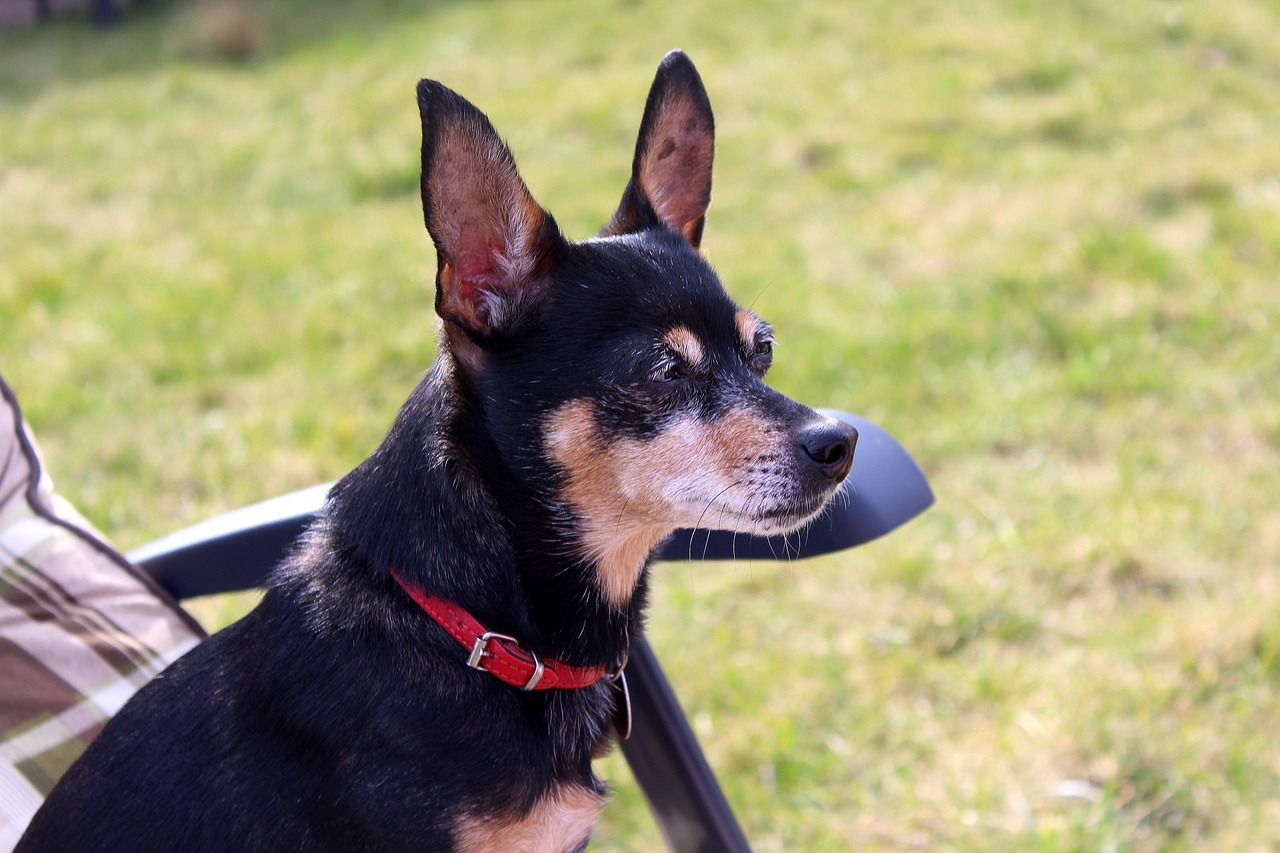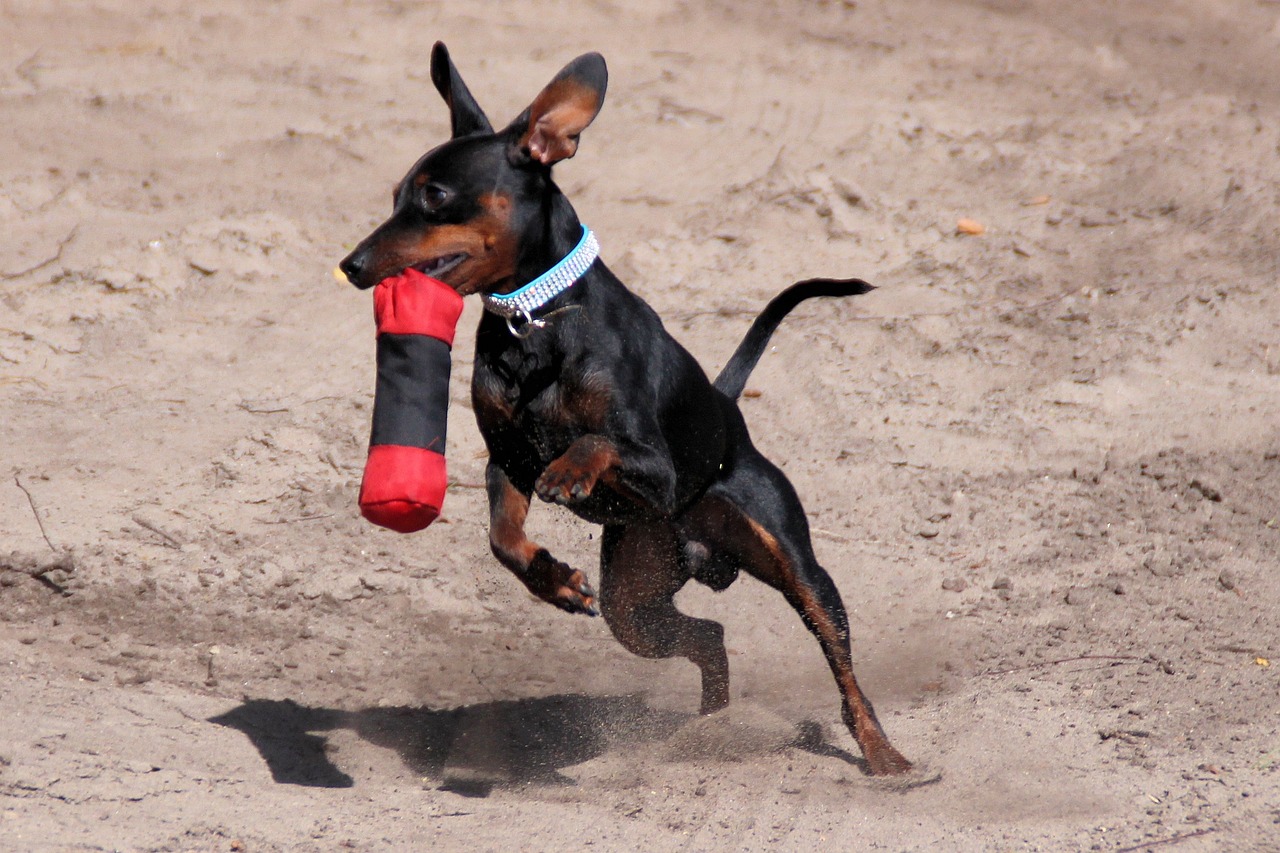The Miniature Pinscher, often affectionately called the “Min Pin,” is a breed that combines elegance with energy, assertiveness with affection, and an ancient heritage with a distinctly modern appeal. Despite popular misconceptions, the Miniature Pinscher is not a “miniature Doberman” but rather a distinct breed with a history that predates the Doberman Pinscher by centuries. Originating from Germany, the Miniature Pinscher was developed to hunt vermin, particularly rats, in homes and stables. This fearless and spirited breed showcases a compact, muscular body; a smooth, sleek coat; and a confident demeanor that belies its small size. Over the years, the Miniature Pinscher has transitioned from a skilled hunter to a beloved companion, retaining its high energy and keen intelligence. This article aims to delve into the rich history and origins of the Miniature Pinscher, exploring its development, cultural significance, and the characteristics that have cemented its popularity among dog enthusiasts around the world.

The Ancestral Origins of the Miniature Pinscher
The Miniature Pinscher’s origins can be traced back to Germany several centuries ago, where it was bred primarily as a ratter. Contrary to common belief, the breed is not a downsized version of the Doberman Pinscher; in fact, it predates the Doberman by at least a few centuries. The Min Pin’s ancestry includes a mix of older breeds such as the German Pinscher, with infusions of Dachshund and Italian Greyhound blood to refine its size and enhance its agility. This meticulous breeding resulted in a fearless, energetic dog with a compact frame and an instinctive drive to hunt vermin.
Development and Recognition
Throughout the late 19th and early 20th centuries, the Miniature Pinscher’s popularity in Germany grew, leading to its formal recognition and the establishment of a breed standard by the Pinscher Klub, later known as the Pinscher-Schnauzer Klub. The breed was introduced to the United States in the early 20th century, where it quickly gained popularity. The American Kennel Club (AKC) officially recognized the Miniature Pinscher in 1925, categorizing it within the Toy Group. This recognition marked a significant milestone in the breed’s history, facilitating its spread and acceptance as a companion dog beyond German borders.
The Breed in Modern Times
In modern times, the Miniature Pinscher enjoys widespread popularity both in the United States and around the world. The breed is cherished not only for its historical role as an efficient matter but also for its dynamic personality, intelligence, and loyalty. Miniature Pinschers are highly active and require regular exercise to satisfy their energy levels. They excel in various dog sports and activities, including agility, obedience, and rallies, showcasing their versatility and adaptability. The breed’s compact size and minimal grooming needs make it an ideal companion for a wide range of living situations.
Characteristics and Temperament
The Miniature Pinscher stands out for its striking, sturdy appearance, characterized by a smooth coat, well-defined musculature, and proud carriage. The breed comes in several colors, including red, stag red (red with black hairs), black and rust, and chocolate and rust. Min Pins are known for their fearless, alert, and spirited temperament. Despite their small stature, they possess a strong presence and are often described as the “king of toys.” They are fiercely loyal to their families, though they can be wary of strangers, making them excellent watchdogs. Their intelligence and independent nature require consistent, positive training methods.
The Miniature Pinscher’s journey from a proficient ratter in Germany to a beloved companion dog worldwide is a testament to its enduring appeal and versatility. With its rich history, distinctive appearance, and dynamic personality, the Miniature Pinscher has captured the hearts of dog lovers across the globe. As a breed that combines the best of both worlds—ancient heritage and modern charm—the Miniature Pinscher continues to be a favored choice among those seeking a small dog with a big heart and an even bigger personality. Whether in the show ring or the home, the Miniature Pinscher stands as a proud representation of its storied past and bright future.
Frequently Asked Questions About The History of Miniature Pinschers

1. Is the Miniature Pinscher a smaller version of the Doberman Pinscher?
No, the Miniature Pinscher is not a smaller version of the Doberman Pinscher. Despite their similar physical appearance, the Miniature Pinscher predates the Doberman Pinscher by several centuries. The Min Pin, as it is affectionately called, was developed in Germany primarily for hunting vermin, such as rats. Its lineage is distinct and includes influences from breeds like the German Pinscher, the Dachshund, and the Italian Greyhound, which contributed to its small size and agile body. The misconception that the Miniature Pinscher is a “mini Doberman” likely stems from their similar physical traits, but each breed has a separate history and development.
2. What is the origin of the Miniature Pinscher?
The Miniature Pinscher originated in Germany, where it was bred primarily as a ratter to control vermin populations. The breed’s development dates back several centuries, with its ancestry including a mix of breeds such as the German Pinscher, Dachshund, and Italian Greyhound. This combination resulted in a small, agile dog with a strong hunting instinct and a fearless disposition. The Miniature Pinscher was highly valued for its effectiveness in eradicating rats from homes and stables, earning its place as a cherished companion and skilled hunter.
3. How did the Miniature Pinscher get its name?
The name “Miniature Pinscher” directly translates to “small biter” in German, reflecting the breed’s origins as a vermin hunter. The term “Pinscher” refers to the breed’s method of hunting, which involves catching and biting prey. The “Miniature” part of the name was added to distinguish this smaller breed from the larger German Pinscher, highlighting its compact size while retaining the characteristic hunting technique of its ancestors.
4. When was the Miniature Pinscher officially recognized as a breed?
The Miniature Pinscher was officially recognized as a breed by the American Kennel Club (AKC) in 1925. This formal recognition in the United States marked a significant milestone in the breed’s history, facilitating its popularity and spread beyond Germany. The establishment of a breed standard helped to preserve the Miniature Pinscher’s unique characteristics and ensured its continued success as both a companion dog and a participant in dog shows and competitions.
5. What roles did Miniature Pinschers historically serve?
Historically, Miniature Pinschers served as efficient ratters, tasked with hunting and controlling vermin populations in homes and stables. Their small size, agility, and fearless nature made them particularly effective in this role. Beyond their practical utility in vermin control, Miniature Pinschers were also cherished as companion animals, valued for their spirited temperament and loyalty. Despite their transition from working dogs to companion pets, Min Pins have retained their high energy and instinctual drive.
6. How did Miniature Pinschers come to be recognized outside of Germany?
Miniature Pinschers came to be recognized outside of Germany through their introduction to other countries, particularly the United States, in the early 20th century. As people traveled and migrated, they brought these small, spirited dogs with them, sharing their unique qualities with a wider audience. The breed’s official recognition by the American Kennel Club (AKC) in 1925 played a crucial role in establishing its presence internationally, contributing to its growing popularity as a companion dog around the world.
7. What are the distinctive physical characteristics of the Miniature Pinscher?
The Miniature Pinscher is known for its compact, muscular build, and sleek, short coat. The breed stands out for its proud, high-stepping gait, often described as a “hackney-like” movement. Min Pins have a well-defined, wedge-shaped head, dark, oval eyes, and high-set, erect ears, which can be cropped or left natural. Their coat comes in several colors, including red, stag-red, black and rust, and chocolate and rust. The breed’s appearance is characterized by its spirited expression and confident demeanor.
8. What is the temperament of the Miniature Pinscher?
The Miniature Pinscher possesses a lively, spirited temperament, combining fearlessness with affection. Despite their small size, Min Pins are known for their bold, confident nature, often acting as if unaware of their diminutive stature. They are highly energetic, intelligent, and curious, with a strong desire to explore their surroundings. Miniature Pinschers are loyal to their families and can be protective, making them excellent watchdogs. However, their independence and assertiveness require consistent, positive training to ensure they are well-behaved companions.
9. Are Miniature Pinschers good with children and other pets?
Miniature Pinschers can be good with children and other pets, especially if they are raised together or properly socialized from a young age. However, due to their small size and sometimes assertive personality, interactions with very young children should be supervised to prevent accidental injury. Min Pins may also exhibit a strong prey drive, so care should be taken when introducing them to smaller pets. Socialization and training are key to fostering positive relationships with both children and other animals.
10. How do Miniature Pinschers perform in dog sports and activities?
Miniature Pinschers excel in a variety of dog sports and activities, thanks to their high energy, agility, and intelligence. They are particularly adept at obedience, agility, and rally, where their quick learning ability and enthusiasm for challenges are evident. Min Pins also enjoy participating in activities that engage their minds and bodies, such as trick training and canine freestyle. Their spirited nature and eagerness to please make them competitive and entertaining participants in various dog sports.
11. What are the grooming requirements for a Miniature Pinscher?
The grooming requirements for a Miniature Pinscher are relatively low, thanks to their short, smooth coat. Regular brushing can help minimize shedding and keep their coat shiny. Min Pins require occasional baths to maintain their cleanliness, along with routine care for their nails, ears, and teeth. Their minimal grooming needs make them an ideal choice for individuals looking for a low-maintenance companion.
12. How long do Miniature Pinschers typically live?
Miniature Pinschers typically have a lifespan of 12 to 16 years. With proper care, including a balanced diet, regular exercise, and routine veterinary check-ups, Miniature Pinschers can enjoy a long, healthy life. Their longevity is a testament to the breed’s overall robust health and the dedication of their owners to providing the best possible care.
13. What health issues are common in Miniature Pinschers?
Miniature Pinschers are generally a healthy breed but can be prone to certain health issues, including patellar luxation, progressive retinal atrophy (PRA), and Legg-Calvé-Perthes disease. Obesity can also be a concern, as it can lead to additional health problems. Regular veterinary care, including health screenings and preventive measures, can help manage and reduce the risk of these conditions. Responsible breeding practices are crucial for minimizing the prevalence of hereditary health issues in the breed.
14. How much exercise do Miniature Pinschers need?
Miniature Pinschers require moderate exercise to maintain their physical and mental well-being. Daily walks, play sessions, and opportunities for safe, supervised exploration can provide the necessary physical activity. Despite their small size, Min Pins have a high energy level and benefit from activities that stimulate both their body and mind. Adequate exercise helps prevent boredom and potential behavioral issues, ensuring a happy and well-adjusted pet.
15. How can prospective owners ensure they are getting a healthy Miniature Pinscher puppy?
Prospective Miniature Pinscher owners can ensure they are getting a healthy puppy by selecting a reputable breeder who follows responsible breeding practices. Reputable breeders conduct health screenings and genetic testing on their breeding dogs to minimize the risk of hereditary conditions. They should provide health clearances for both parents and be transparent about any health issues in the puppy’s lineage. Visiting the breeder’s facility, meeting the puppy’s parents, and observing the conditions in which the puppies are raised can offer insights into their health and temperament. It’s also advisable to ask for references and review the breeder’s reputation to ensure they adhere to ethical breeding practices.
 Toledo, United States.
Toledo, United States.